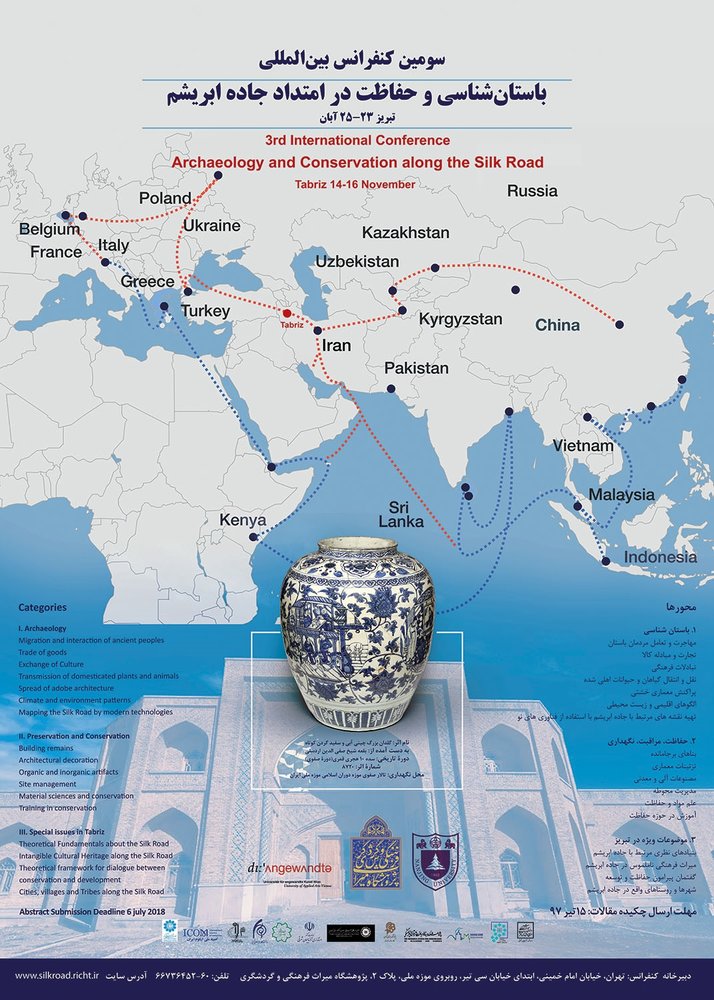Tabriz to host intl. conference of archaeology and conservation

TEHRAN – Iran’s historical city of Tabriz will play host to the 3rd international conference of “Archaeology and Conservation along the Silk Road” from November 14 to 16, ILNA reported on Saturday.
It will bring together scholars, researchers and practitioners in the fields of conservation, archaeology and art history to sharpen focus on historical sites that are dotted along the ancient Silk Road.
Archaeology sector of the event will discuss migration and interaction of ancient peoples; trade of goods (ceramic, metal, textile, jewels etc.); exchange of culture (religion, art, and technology, etc.), transmission of domesticated plants and animals; climate and environment patterns; and mapping the Silk Road by modern technologies (GIS, Laser-scanning, etc.).
Ways to preserve remains, architectural decoration, organic and inorganic artifacts, site management, and material sciences and conservation are amongst topics to be addressed in a section dedicated to preservation and conservation.
The event is being organized by Iran’s Research Institute of Cultural Heritage and Tourism in close cooperation with Nanjing University and the University of Applied Arts Vienna.
Previous editions of the conference were held in May 2014 and May 2016 at the Northwest University in Xi’an and Nanjing University in Nanjing, according to the richt.ir.
Capital of East Azarbaijan province, Tabriz has been a place of cultural exchange since antiquity and its historic bazaar complex is one of the most important commercial centers on the Silk Road.
The city is currently holding the title of 2018 Islamic Tourism Capital which was approved by the inter-governmental Organization of Islamic Cooperation in 2015.
The Silk Road used to be an ancient network of trade routes, formally established during the Han Dynasty of China, which linked East to West by passing through the regions of the ancient world in commerce between 130 BC and 1453 CE.
Culture, art, religion, philosophy, technology, language, science, architecture, and every other element of civilization was exchanged along the Silk Road, carried with the commercial goods the merchants traded from country to country.
AFM/MQ/MG
Leave a Comment